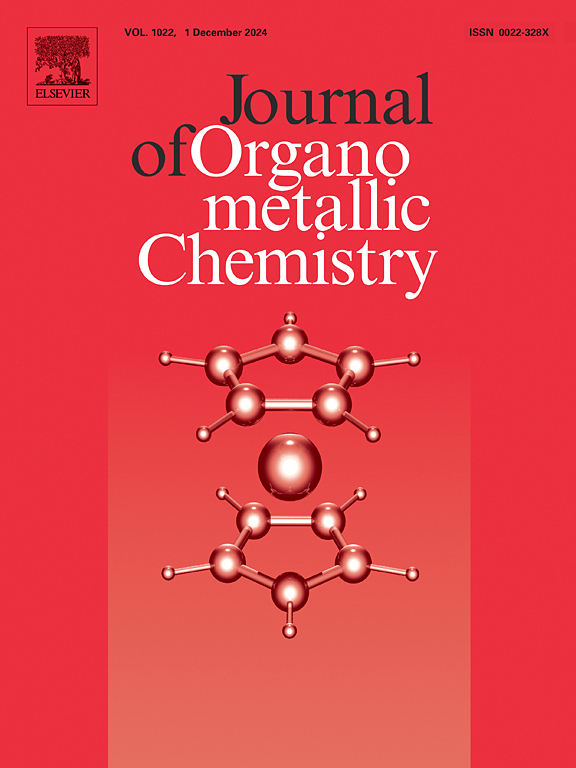Counterion dependence of normal versus abnormal binding of triazolium salts to an iridium complex
IF 2.1
3区 化学
Q3 CHEMISTRY, INORGANIC & NUCLEAR
引用次数: 0
Abstract
Reaction of 2-pyridylmethyl-substituted triazolium salts with IrH5(PPh3)2 produces novel NHC iridium complexes. Both normal (C-5) and abnormal (C-3) binding is seen. Changing the counter-anion of the triazolium salt reactant determines the regiochemistry of binding between iridium and the triazolium ring. Bromide, being the best hydrogen bonder, favors normal binding to iridium (C-5), all other counterions tried, favor abnormal binding (C-3).

三唑盐与铱配合物正常与异常结合的反离子依赖性
2-吡啶基甲基取代三唑盐与IrH5(PPh3)2反应生成新型NHC铱配合物。正常(C-5)和异常(C-3)结合均可见。改变三唑盐反应物的反阴离子决定了铱与三唑环结合的区域化学性质。溴,作为最好的氢键,倾向于与铱正常结合(C-5),所有其他的反离子,倾向于异常结合(C-3)。
本文章由计算机程序翻译,如有差异,请以英文原文为准。
求助全文
约1分钟内获得全文
求助全文
来源期刊

Journal of Organometallic Chemistry
化学-无机化学与核化学
CiteScore
4.40
自引率
8.70%
发文量
221
审稿时长
36 days
期刊介绍:
The Journal of Organometallic Chemistry targets original papers dealing with theoretical aspects, structural chemistry, synthesis, physical and chemical properties (including reaction mechanisms), and practical applications of organometallic compounds.
Organometallic compounds are defined as compounds that contain metal - carbon bonds. The term metal includes all alkali and alkaline earth metals, all transition metals and the lanthanides and actinides in the Periodic Table. Metalloids including the elements in Group 13 and the heavier members of the Groups 14 - 16 are also included. The term chemistry includes syntheses, characterizations and reaction chemistry of all such compounds. Research reports based on use of organometallic complexes in bioorganometallic chemistry, medicine, material sciences, homogeneous catalysis and energy conversion are also welcome.
The scope of the journal has been enlarged to encompass important research on organometallic complexes in bioorganometallic chemistry and material sciences, and of heavier main group elements in organometallic chemistry. The journal also publishes review articles, short communications and notes.
 求助内容:
求助内容: 应助结果提醒方式:
应助结果提醒方式:


